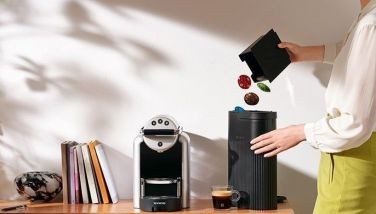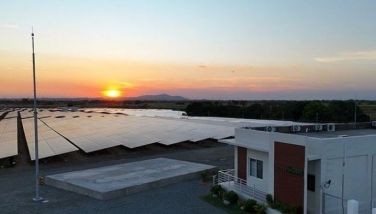Mga plastik kayo!
“Plastik ka!” (“You’re so plastic!”) This derogatory term entered our vocabulary in the early ‘70s and is still often used in showbiz to denounce movie and TV stars who are insincere in their actions. From the generic plastic, the term has even evolved to Tupperware and even Orocan. “Ang Orocan mo!” This is said, however, in a lighter vein, in a joking manner even. Plastic is still the harsher term.
I can imagine that this word was used to refer to insincere people because plastic became a substitute for the genuine articles originally made of glass and metal. Up to the mid-‘60s, households always used glass pitchers — some made of carnival glass even. But when plastic came, we had plastic pitchers and tumblers, which proved safer for children. Those assigned to wash dishes didn’t have to worry about breaking glass anymore, but I guess it was murder trying to remove the grease off those plastic items.
Before the ‘70s, shoppers in supermarkets had to make do with paper bags that could hardly carry their grocery items, especially since most products came in either glass or tin. But the sturdier plastic made life easier for everyone — at least at that point in our lives.
And so what else did plastic replace in our homes? There’s the trash can. In the past, we threw our garbage in a huge tin container that once had cooking oil in it — or even La Pacita biscuits. In time, of course, these became rusty and had to be replaced often. Plastic solved that in the mid-‘60s.
I have an older friend who grew up in a house in Singalong that was built before the outbreak of the Pacific War. It’s a lovely house (I hope it’s still there) with wood wall panels. In one section hangs an Amorsolo.
In 1967, Eddie Romero used that house to film some of the scenes in Manila: Open City, which dramatizes the horrors of war, particularly toward the end when there was carnage in Intramuros, Ermita and Malate. The film stars Charito Solis (in the role of a nun) and served as the launching vehicle for then ingénue Nova Villa.
When the film was finally shown in movie theaters, my friend and her family excitedly went to see it and were overjoyed with the fact that their house was there magnified on screen in all its glory — until the shot panned toward their driveway. To their horror, the art director forgot to remove their plastic garbage bin and it wasn’t supposed to be there because plastic items weren’t in use prior, during and even after the Second World War.
Now why do I keep on harping about plastic? I am discussing plastic now because I am already up to here with plastic bags. I see these items on TV where scenes of relief goods distribution are shown in the news. In repacking stations at relief good centers, I had to handle them and it was then that it dawned on me that we are using so much plastic again to pack relief goods when plastic has become one of the culprits in the recent Ondoy tragedy. Wasn’t it plastic that blocked our drainage and caused flooding? Of course, it was our fault because we put those there.
The irony is that we are using plastic bags again to help the victims of that deluge and after the recipients have all but consumed their relief goods, where do these plastic bags end? In our drainage again — to cause yet another flooding (hopefully not!).
That we are using plastic again to help distribute relief goods I guess is forgivable at this point because we are in an emergency situation. But after this, I hope establishments would start providing cloth bags or anything made of biogradable materials for us consumers.
I know that some supermarkets have already started this practice of encouraging shoppers to use recyclable bags, but there aren’t enough stores doing this. As soon as we have recovered from this tragedy, I hope a massive campaign is launched to eliminate plastic bags from supermarkets, department stores and especially in fast food chains.
I don’t claim to be an environmentalist because the only contribution I make to save the earth is my conscious effort not to throw candy wrappers just anywhere. I keep those in my pocket until I see a trash can where I can dispose of it properly. Also, I don’t accept those glossy flyers anymore from those real estate sales agents trying to lure you into buying a condo unit. No, thank you, but I don’t have the money for it, I always tell them. Their retort: Maybe you can give this to your friends, sir. I don’t have friends either — I tell them back.
The bottom-line here is that we are wasting so much paper. Imagine all those trees that had to be felled for those flyers. Sure I see a lot of people accepting these flyers out of curiosity (and courtesy), only to end up throwing these away — on the floor mostly because we are still a nation that has yet to learn to dispose of our garbage properly.
Again, I am no environmentalist and, in fact, am still in the process of mastering the art of waste segregation. But I appeal to all our establishments to please, please start thinking of alternative ways to substitute these plastic bags with anything that would no longer be harmful to our Mother Earth.
Before I end this piece, I just want to point out the one good quality of plastic: It is durable. Even in the entertainment profession, the ones who stay long are mostly the plastic people because they contain their anger, resentment and even simple complaints to themselves — afraid to displease co-workers and especially the public. Yes, they stay long and are durable. But they also warp — in time.
As for our politicians, in the wake of the Ondoy tragedy, how many of them took advantage of the opportunity to paint an image of themselves looking so helpful and useful — compassionate even — in the middle of the calamity? This is the height of plasticity. Ay naku, mga plastik kayo!
- Latest
- Trending






























